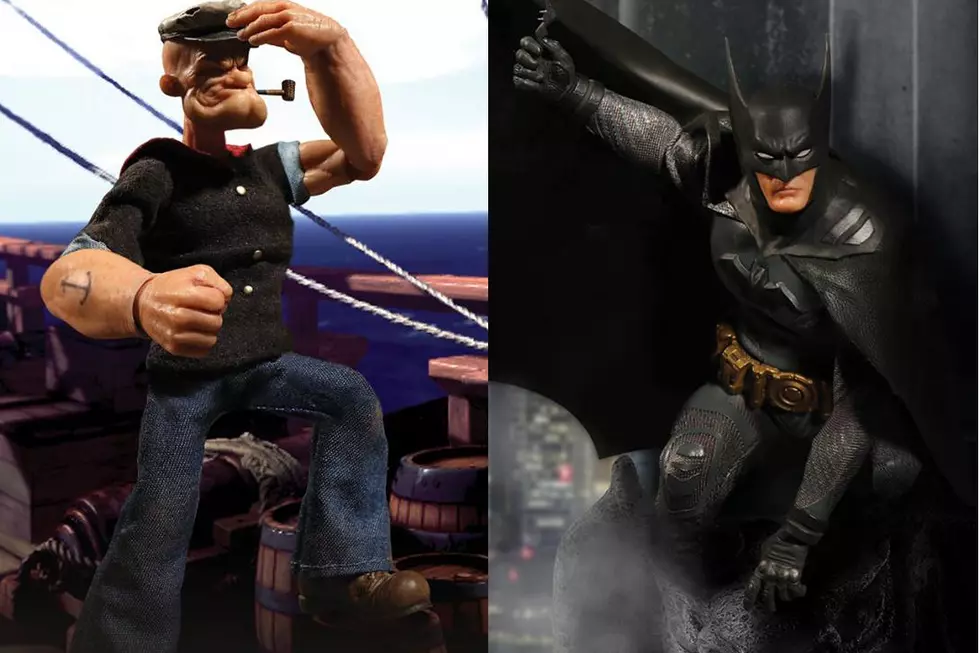
Celebrating the Life and Work of E.C. Segar, Creator of Popeye
On December 8th, 1894, Elzie Crisler Segar was born in the tiny town of Chester, Illinois. The youngest of eight children, Segar showed artistic skill from a young age. He spent his teenage years working various jobs (sign painter, house painter, vaudeville musician, movie projectionist), and after enrolling in a correspondence course in cartooning, he began writing and drawing the licensed strip Charlie Chaplin's Comic Capers for the Chicago Herald in 1916. He hopped crosstown to William Hearst's Chicago Evening American in 1918, where he created a new strip called Looping The Loop and contributed illustrations to the sports section.
In the fall of 1919, he relocated to New York City, began working for King Features Syndicate, and on December 19th, launched the strip that would (eventually) bring him immortality: Thimble Theatre.
Thimble Theatre spent most of its first decade receiving modest acclaim, as it traced the domestic antics of ne'er-do-wells Castor Oyl and Ham Gravy, Castor's sister (and Ham's fiancé) Olive Oyl, and the Oyl parents, Mama and Cole. Castor and Ham would come up with get-rich-quick schemes that never seemed to pan out, Ham and Olive would bicker, and things would resolve themselves with absurdist punchlines and a fair dose of slapstick.
But then, nine years and one month after Thimble Theatre began, the balance would shift. Segar was transitioning to telling longer continuing stories, and when Castor and Ham decided to set off on an adventure to the mysterious Dice Island, they set the stage for Ham's eventual displacement as both Olive's major love interest and the strip's lead character. Needing an experienced mariner to accompany them on the voyage, Castor ran across a strange character sporting a corncob pipe and gigantic forearms, and hired him on the spot.
Popeye soon took over as the unquestioned star of the show, and Segar found his sea legs, spinning tales that mixed adventure and humor in equal measure, and introducing an array of other memorable characters – J. Wellington Wimpy, The Sea Hag, Eugene The Jeep, Bluto, Alice The Goon, Poopdeck Pappy, and baby Swee'Pea filled out the cast, and Thimble Theatre became a sensation.
Before long, Popeye and his friends were appearing on all manner of merchandise and being used to advertise various goods. Fleischer Studios launched a wildly successful series of Popeye cartoons in 1933, and in 1935, a syndicated Popeye radio show began airing across the country.
Sadly, Segar took ill in 1938 and, despite various treatments, succumbed to liver disease in October of that year, two months before his 44th birthday. But though he passed away far too soon, his characters would go on to conquer new forms of media, becoming stars of comic books, TV, and film over the ensuing decades. The comic strip itself continued to thrive under the able guidance of Segar's assistant Bud Sagendorf, officially changing its name from Thimble Theatre to Popeye in the '70s, and continues to be published in newspapers to this day.
E.C. Segar's influence continues to be felt in a myriad of ways. He was a pioneer of long-form comic storytelling; his work has inspired countless creators, from Jerry Siegel and Joe Shuster to Jules Feiffer to Roger Langridge; his characters are some of the 20th century's most enduring icons, and Popeye himself is often cited as the first true superpowered comic hero, laying rhe groundwork for all who would follow.
So on this anniversary of his birth, we at ComicsAlliance cheerfully celebrate the life and legacy of E.C. Segar. Shots of spinach all around!
More From ComicsAlliance
![Mezco’s One:12 Collective Makes Marvel and DC More Memorable Than Ever [Toy Fair 2017]](http://townsquare.media/site/622/files/2017/02/IMG_2587.jpg?w=980&q=75)




![Fox News Said Some Incredibly Stupid Bullsh*t About Comics Again [Video]](http://townsquare.media/site/622/files/2014/09/Fox01.jpg?w=980&q=75)



